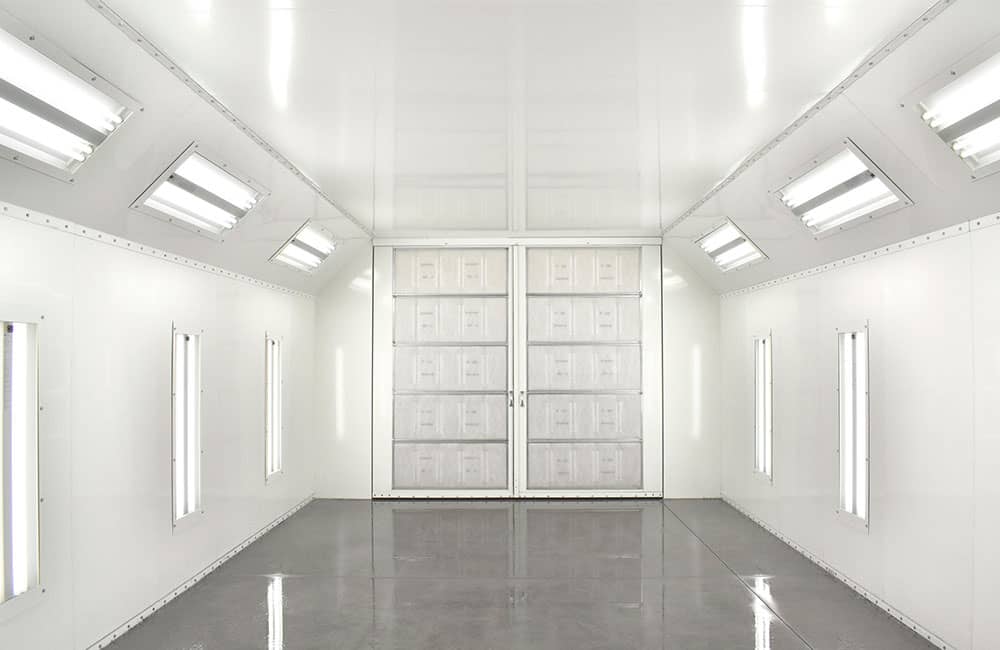
When investing in a paint booth, choosing the ideal airflow style for your business’ needs is perhaps the most important decision. The right paint booth can set your business up for success, but the wrong one could hamper your production.
The airflow style you pick for your paint booth plays a big part when it comes to finish quality and contamination control, as well as capital costs and operational expenses. The following are the four primary airflow styles for paint booths:
Cross Draft paint booths are the most cost-effective and popular for industrial applications. They are generally less expensive upfront because they typically operate at a lower cubic feet per minute (CFM) airflow rate, and therefore require smaller fans, smaller air make-up units (AMUs) and fewer filters. This also results in lower operating costs.
Air enters through a filtered front door or plenum, and is pulled horizontally — parallel to the floor and over the product — to the exhaust chamber at the rear of the booth. The filter bank captures particles, and the filtered air is exhausted into the atmosphere through ducting.

In addition to the less expensive price tag, industrial manufacturers like cross draft booths because they are easily pressurized for climate control. They also provide a versatile solution for a variety of coating applications — from wood products to aircraft.
The biggest drawback of cross draft paint booths is the increased chance of contamination. Since cross draft airflow moves horizontally, floor contamination is possible. Contamination can also happen when painting parts, as the air flows across the ones closest to the intake filters and can flow across the top of other parts in the paint booth. There is also less control of overspray in cross draft paint booths compared to spray booths with other airflow styles.
Side downdraft paint booths are an economical solution for businesses that cannot or do not want to dig an exhaust pit, which requires concrete work, making installation longer and costlier.
In non-pressurized side downdraft paint booths, air flows downward over the product — drawn through a full-length, filtered ceiling toward the floor by exhaust fans located in exhaust chambers on each side of the paint booth. In pressurized side downdraft booths, an AMU or intake fan forces air into an intake plenum that encloses the full-length, filtered ceiling.
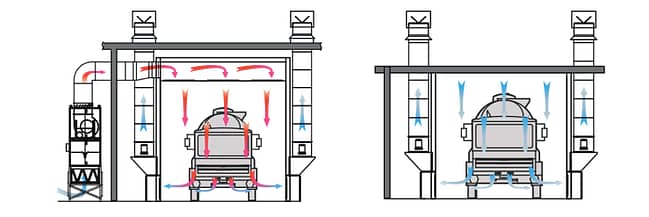
Gravity-assisted downward airflow is one of the biggest benefits of side downdraft paint booths, and they provide more uniform airflow than cross draft booths. Side downdraft paint booths also offer a higher level of contamination control and finish quality than cross draft paint booths, largely because of the downward airflow and side exhaust.
A larger footprint is unavoidable with side downdraft paint booths, as they require more exhaust fans, ducting and roof penetration, and the exhaust plenums on the sides increase the overall width of the spray booth. Operational costs of side downdraft paint booths are slightly higher than cross draft paint booths due to the full-ceiling filtration. Also, as air gets pulled into the exhaust chambers on the sides of the booth, overspray can hit the painter.
Semi-downdraft paint booths are a hybrid, combining features of cross draft and downdraft booths. They are generally less expensive than downdraft paint booths, with lower installation and operational costs.
Air enters semi-downdraft paint booths through a filtered ceiling plenum in the first 25 to 30 percent of the booth. The exhaust fan continues to pull the air through the working chamber, causing the air to change directions and become parallel to the floor. The air flows across the product and exits through a filtered exhaust plenum at the rear of the paint booth.
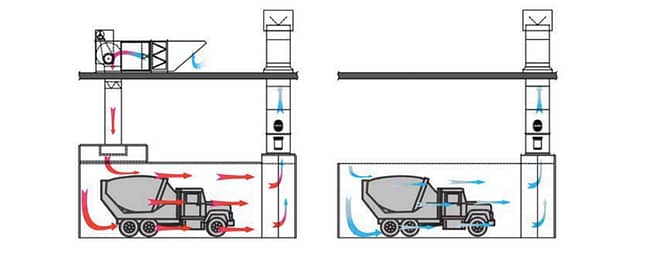
The only downside of semi-downdraft paint booths is the potential for dead airflow spots at the front of the spray booth, along the floor. Dead spots, or areas where air does not flow properly over the product, can make spraying difficult even for the most skilled painter.
Downdraft paint booths provide the best airflow style for controlling overspray and contamination. For most automotive refinishers, especially those repairing luxury vehicles, downdraft airflow is the preferred choice.
In downdraft paint booths, air enters through a filtered ceiling plenum in a downward motion, flows vertically over and around the product, and exits through a filtered exhaust pit in the floor that runs nearly the entire length of the paint booth. Unlike side downdraft booths, the airflow does not have to fight gravity or pass by the painter; rather, it is assisted by gravity, which carries overspray into the exhaust pit.
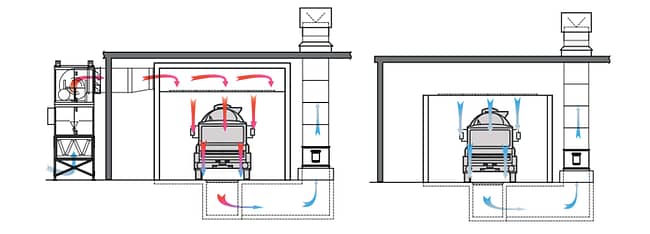
Downdraft paint booths require about 20 to 40 percent more air than cross draft booths, adding to operational costs. Even though downdraft booths are the most expensive, businesses can usually make up the added cost for top-of-the-line equipment in less than a year, thanks to increased throughput and labor savings, with not as much time needed for cutting and buffing.
The nature of the airflow in downdraft paint booths produces the fewest blemishes, with the least amount of buffing required. While downdraft paint booths produce the highest-quality finish, premium finishes may not be necessary for some industrial products, parts and components.
Another potential downside: When finishing something that requires the bottom to be painted, such as a boat or airplane, a downdraft paint booth can pose challenges. The painter is placed between the paint gun and the floor when painting the underside, making it difficult to control the spray.
Ultimately, when deciding upon an airflow style for your paint booth, you want to select the style that fits within your business’ budget and meets the quality requirements for the products you paint. You don’t necessarily need the best paint booth on the market or the most expensive booth. You want the paint booth that is best for your business, with an airflow style that allows your operations to be the most efficient.
One of the best ways to highlight your business is through a story that you can share across your online platforms. It humanizes your business and shows that your business can make a meaningful impact. Your testimonial would be used as a project profile on the GFS Booth Blog and can be shared on your website and/or social media channels.
Complete this form and we’ll be in touch to showcase your company.
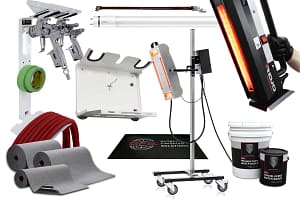
Shop a variety of GFS aftermarket products, including booth protection products and mobile accelerated curing units. And enjoy the convenience of fast and free ground shipping throughout the contiguous United States.
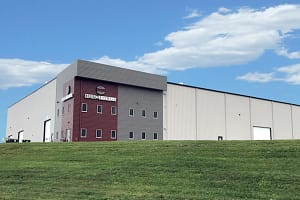
Located at GFS’ headquarters in Osseo, Wisconsin, the Center for Excellence is an innovative facility featuring an automotive refinish training center, as well as a separate space dedicated to technical product training.
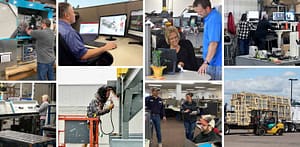
GFS is continuously searching for talented, ambitious individuals to join our team. We aim to provide our employees with every opportunity to make an impact on the company and find their niche along the way — weather in a production, field services or an office position.